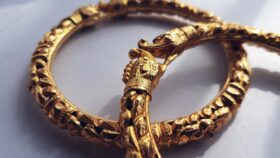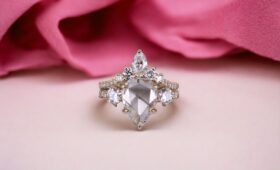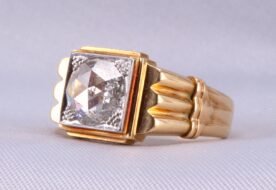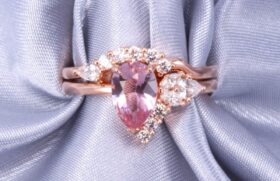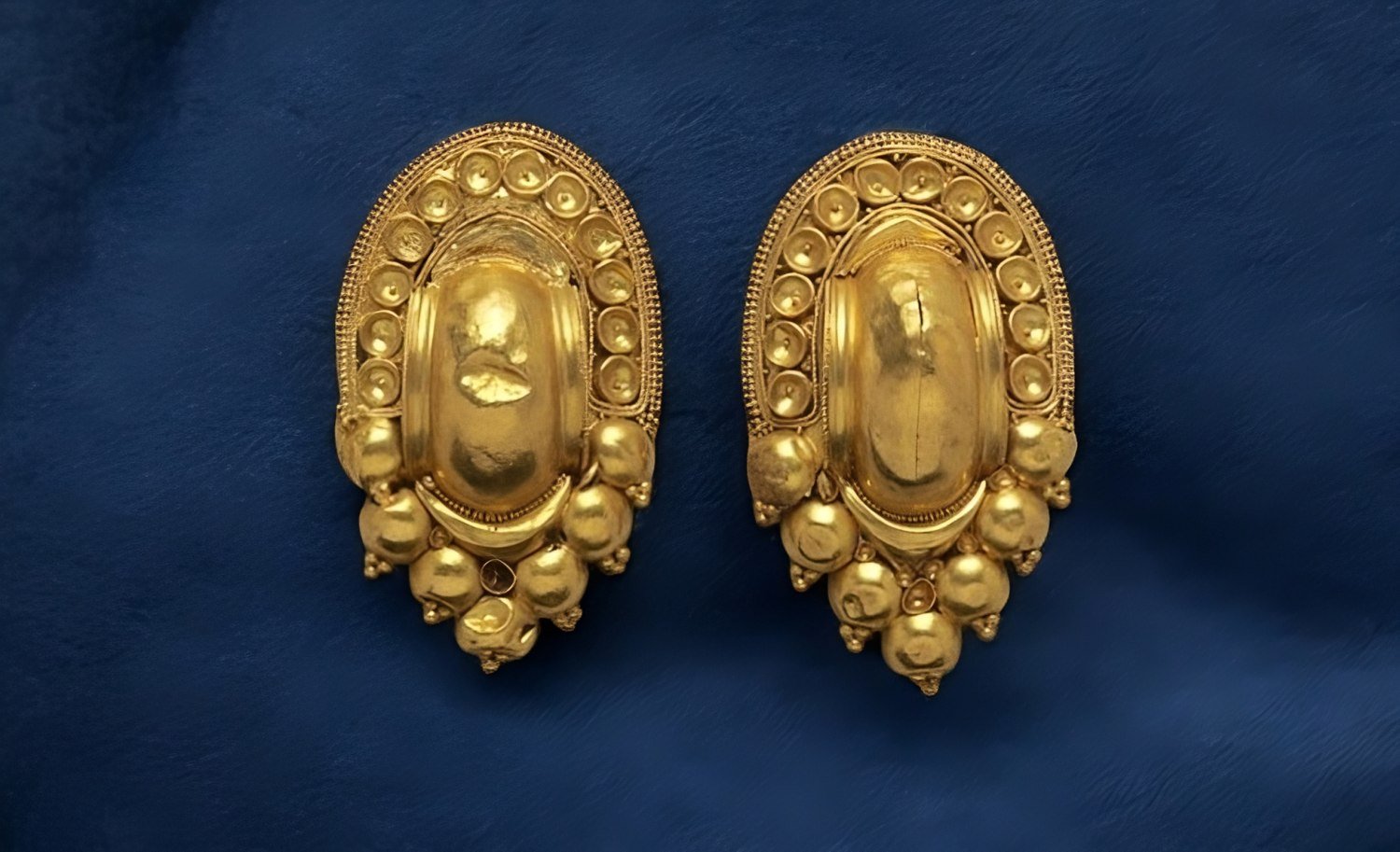
08 Sep The Art of Granulation in Fine Jewelry
Seen Above: 5th century gold Etruscan earrings resembling a cluster of grapes. With repoussé and granulation.
Granulation is a jewelry making technique that is thousands of years old. By delicately fusing minute gold beads together, granulation adds texture, depth, and dimension to fine jewelry, enhancing its beauty and allure — while transforming the piece into wearable art.
As with hand milgrain, hand engraving, and fine filigree, it is one of the crafting skills that C. Blackburn Jewelers’ artisans excel at when creating custom rings, earrings, pendants, and other items of fine jewelry.
If you are looking to create custom jewelry with granulation or other hand-crafted accents, make an appointment to meet personally with our owner, Carl Blackburn, one of San Diego’s most well-known jewelry designers and custom jewelers.
Call him at 858-251-3006, or send him a text message at 858-251-3006.

The Origins of Granulation
Granulation, the art of fusing tiny gold beads onto jewelry, has roots dating back to the Sumerian culture in Mesopotamia, around 2500 BCE. These ancient jewelers created stunning, intricate patterns that amaze even today’s fine jewelers. Later, Egyptians also became known for their granulated jewelry — necklaces, brooches, and earrings — crafted with incredible precision and often featuring religious symbols like the Eye of Horus.
As time passed, granulation spread to other civilizations. In particular, the Etruscans, who dominated Italy between the 8th and 3rd centuries BCE. Their jewelry often featured geometric patterns, floral designs, and animal figures. These pieces were more than just pretty; they symbolized wealth, status, and spiritual beliefs — the Etruscans believing strongly in fate and the will of the gods.

How Granulation Works
Making granulated jewelry is a meticulous process requiring exceptional skill and patience. The technique involves placing tiny gold beads, known as granules, onto the jewelry surface to form intricate patterns.
To create granulation, artisans use specialized tools and techniques. Tweezers, pliers, and hammers help place and arrange the granules, while heat is applied carefully using methods like torching or laser fusion.
Historically, granules were fused using copper salts as a bonding agent, which melted at a lower temperature than gold, allowing the granules to attach without fully melting. Modern jewelers sometimes use soldering or more precise heat control techniques.
The granules themselves are usually made by cutting small pieces of gold wire, which are then heated until they form spheres. Once the design is arranged, the granules are fused to the surface following the desired pattern.

Granulation vs. Milgrain
At first glance, granulation and hand milgrain may seem similar (both being used by ancient artisans), but they are distinct techniques. Granulation involves placing tiny beads of metal (often gold) on the surface of a jewelry piece to create intricate patterns and designs.
The beads are fused to the piece using heat or a bonding agent — sometimes covering a large surface area, which requires precise heat control to bond the beads without melting them.
Milgrain, on the other hand, involves decorating the edges of a jewelry piece with tiny metal bumps. The process requires a beading tool or engraving technique to create tiny, evenly spaced metal bumps along the edges of a jewelry piece.
The term “milgrain,” which means “a thousand grains,” became widely used in the 20th century during the Edwardian and Art Deco periods. It’s primarily used to highlight the edges of a piece, lending it a refined and delicate border that enhances its elegance without overwhelming the central design.
While both techniques offer unique aesthetic qualities, granulation emphasizes texture and (often times) complexity, while milgrain adds a more subtle, decorative finish that draws attention to the contours of the jewelry.
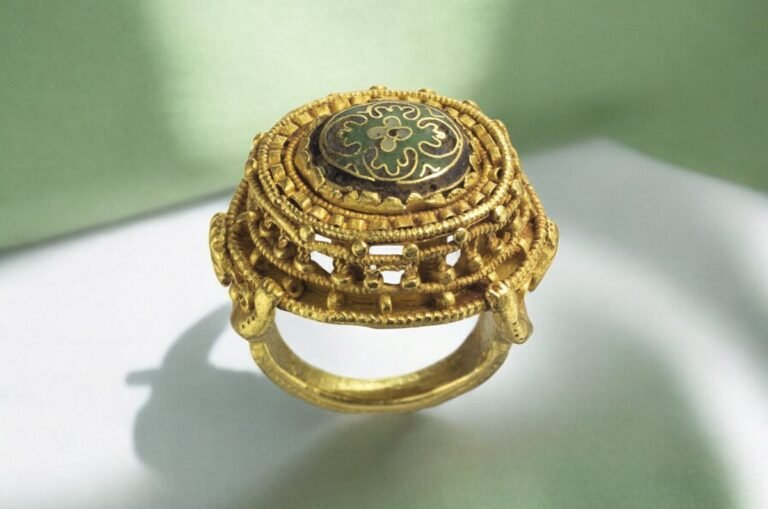
Styles and Variations of Granulation
Ancient Etruscan jewelry featured super intricate patterns — think tiny, perfectly placed beads forming geometric designs, flowers, or even animals. Egyptian granulation leaned a bit more organic. They incorporated patterns with nature and celestial symbols, while also mixing granulation with other materials (like lapis lazuli or turquoise) to make the gold beads pop even more.
The Greeks and Romans took inspiration from earlier cultures like the Etruscans and Egyptians but they often used granulation in simpler, more refined ways — incorporating granules in just small sections (highlighting specific parts of a piece), instead of covering large surfaces. You’ll see it on things like earrings or pendants, where a few beads create a nice contrast against smooth gold.
In India and the Islamic world, granulation has long been a part of intricate filigree designs, where thin gold strands and granules are combined. Indian granulated jewelry often has a sense of movement and lightness, with delicate, detailed work that is meant to capture light and shimmer.
Today’s jewelers have reinvented granulation by mixing ancient techniques with modern tools. Some still use traditional methods — like hand-fusing granules without soldering — while others rely on laser technology to get more precision.
Jewelry designers now explore bolder and more abstract styles. You might find pieces that play with texture and light, or even more minimalist designs where a few granules are strategically placed to create a subtle, elegant effect.
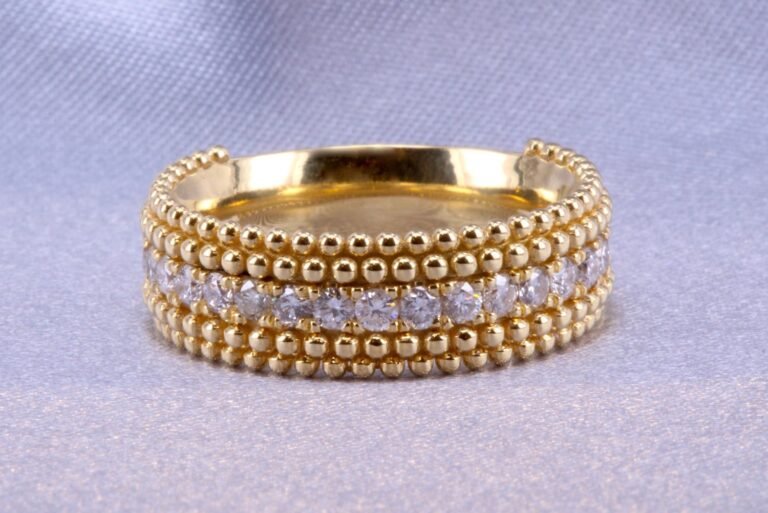
The Value of Granulated Jewelry
As with fine jewelry that features hand engraving, milgrain, and filigree, granulated jewelry is prized not only for its beauty but also for the skill it requires. The painstaking process of fusing tiny beads of gold onto a surface makes each piece a true work of art. The rich cultural history behind the technique further adds to its value.
C. Blackburn Jewelers is both a custom jeweler and a San Diego jewelry buyer. So, if you have antique granulated jewelry you would like to sell, or you would like to create custom jewelry with granulation, please do make an appointment to visit our boutique jewelry store in La Jolla, CA.
Leave us a voicemail at 858-251-3006, or send us a text message at 858-251-3006. You can also contact us via email by using the contact form below.

